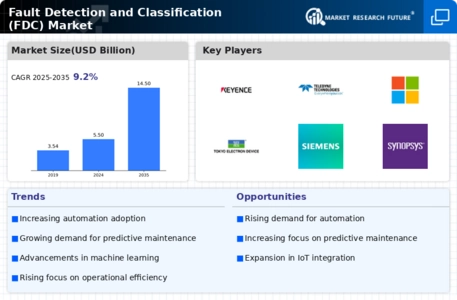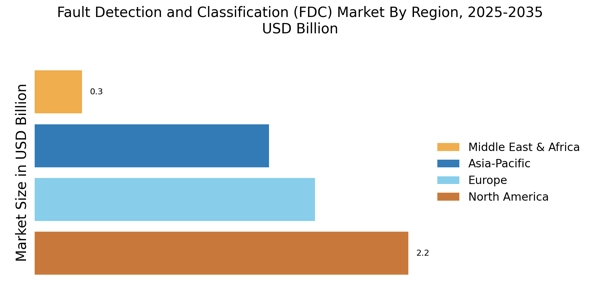Leading market players are Fault Detection and Classification (FDC) competitive landscape includes several key players, both large and small, as well as potential market entrants due to the growing consumer demand for advanced technologies, the market is competitive, with important market developments including new product launches, mergers and acquisitions, higher investments, and collaboration with other organizations. To expand and survive in a more competitive and rising market climate, Fault Detection and Classification (FDC) industry must offer cost-effective products.
Fault Detection and Classification (FDC) is frequently produced by big IT companies used by key players in the global Fault Detection and Classification (FDC) industry to benefit organizations and increase the market sector. In recent years, the Fault Detection and Classification (FDC) industry has offered some of the most significant advantages to enterprises.
Major players in the Fault Detection and Classification (FDC) market, including Keyence Corporation, Cognex Corporation, KLA Corporation, Teledyne Technologies, OMRON Corporation, Microsoft, Tokyo Electron Limited, Siemens, Amazon Web Services, Inc., Synopsys, Inc., Applied Materials, Inc., einnoSys Technologies Inc., Datalogic, PDF Solutions, Nikon Corporation, and others, are attempting to increase market demand by investing in research and development operations.
Keyence Corporation is a renowned Japanese company specializing in the development and manufacturing of automation and quality control equipment. Founded in 1974, the company has grown to become a global leader in the automation and inspection industry. Keyence's product portfolio includes a wide range of cutting-edge technologies, such as sensors, measurement systems, laser markers, machine vision systems, and various industrial automation solutions. They cater to diverse sectors, including manufacturing, automotive, electronics, and pharmaceuticals, by providing innovative solutions that improve efficiency, quality, and productivity in industrial processes.
Keyence is known for its commitment to research and development, ensuring that its products are at the forefront of technological advancements in the automation and quality control sectors.
Cognex Corporation is an American technology company founded in 1981, specializing in machine vision systems and industrial barcode readers. The company has established itself as a global leader in the field of machine vision and image-based barcode reading, serving a broad spectrum of industries, including manufacturing, logistics, and healthcare. Cognex's solutions enable automated quality inspection, process control, and logistics optimization through its range of high-performance vision systems and software. The company's commitment to innovation and quality has allowed it to build a strong reputation for providing reliable and high-precision vision technology.
Cognex is at the forefront of technological advancements, continually evolving to meet the ever-increasing demands of industries seeking automation and quality control solutions.

















Leave a Comment